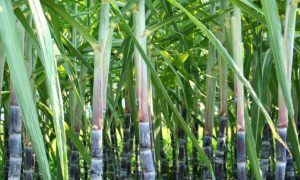Ugandan sugarcane farmers bitter as regional market shrinks on glut, low prices

While Ugandan consumers enjoy the lowest sugar prices in five years, the industry faces turmoil. Outgrowers in Buikwe halted cane supplies to Scoul, protesting falling prices amid a glut and restricted regional markets. Cane prices dropped from Ush250,000 ($67.72) to Ush140,000 ($37.92) per tonne. With Kenya’s market saturated, millers predict further declines. Uganda’s 16 sugar factories, operating at half capacity, warn of worsening conditions without market access improvements.
As Ugandan consumers celebrate the lowest retail prices for sugar in five years, the industry is in a state of turmoil.
Outgrowers are protesting falling prices of cane amid a glut millers blame on rapidly shrinking regional markets, which has resulted in domestic stocks rising to unprecedented levels.
This week, growers in the eastern district of Buikwe resolved to halt supplies of cane to Lugazi-based Sugar Corporation of Uganda Ltd (Scoul) in protest against the fall in the price of cane from Ush250,000 ($67.72) per tonne, just over a year ago to Ush140,000 ($37.92) today.
The millers say they are hamstrung and warn of further declines unless clogged regional markets open up to Uganda.
“It is a misconception for anyone to believe that cane prices are a simply a reflection of the supply of cane; they are more a reflection of the challenges in the market for refined sugar,” said Wilbur Mubiru, spokesperson for industry lobby Uganda Sugar Technologists Association.
“Whenever we face challenges in the market for refined sugar, that is transmitted backwards to the price for cane. If we had better access to the East African market, we would be happy and outgrowers would be happy, but there is nothing we can do about it now.”
Recently, retail prices have fallen sharply in Uganda, averaging Ush3,300 ($0.89) per kilo. That is less than half the peak price of Ush7,000 ($1.90) a kilo three years ago. The Covid-19 shutdowns in 2020-21 hurt demand for sugar in Uganda, leading to many farmers abandoning sugarcane farming.
But subsequent dry conditions in the region as markets opened up amid disruptions to international shipping saw a spike in demand, sending retail prices sky-high.
Prices rebounded strongly, creating a new normal that encouraged more people to plant cane. Now, some millers are predicting a further price decline.
“We see cane prices falling even more, as the crop planted over the past two years reaches maturity,” said Albert Bituura, general manager at Bwendero Sugar, a small miller based in the western Ugandan district of Hoima.
“We are dependent on the Kenyan market, which is now flooded with their domestically produced sugar because of good rains over the past 18 months. The regional market has seized up as a result.”
Uganda’s 16 sugar factories have an installed capacity of 1.2 million tonnes per annum but are operating at only half that capacity because of constrained access to export markets. Domestic consumption is only 0.4 million metric tonnes. Kenya is the single-largest regional market, with Ugandan exports peaking at 100,000 tonnes at one time.
Mr Mubiru told The EastAfrican that, although Uganda has the capacity to supply anywhere between 120,000 and 150,000 tonnes of sugar to Kenya annually, frequent policy reversals have hampered market access.
“We have seen reports that Kenya has blocked Ugandan milk from their market. We have fears that sugar could be next, Mr Mubiru said.
and, if that happens, cane growers should brace for worse because the millers have sugar in stock and cannot mill more than they can sell, so demand for cane will remain depressed,” Mr Mubiru said.
The outgrowers cite high production costs for their insistence on better prices of cane. One farmer in Buikwe said harvesting, loading and transportation are the highest cost heads.
Millers have been considering mechanisation of harvesting and loading, but this has run into resistance, accompanied by threats of arson. The industry has back-pedalled, leaving an unequal status quo in which growers are the most vulnerable.
“Loading might look simple but it is a highly specialised skill, with very few loaders able to optimise between the volume and weight of the vehicles’ carrying capacity. They are monopolists — very rough and always on edge. You can’t bargain with them, so we just take their price,” he said.














